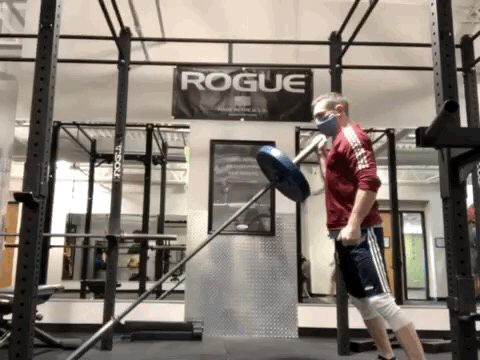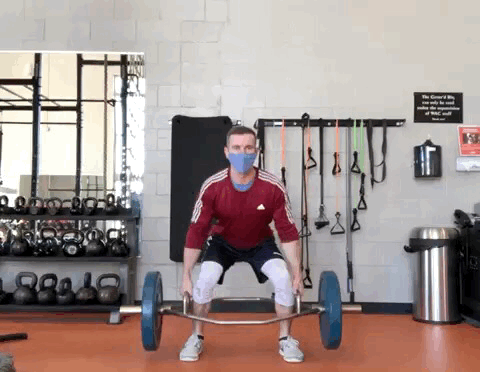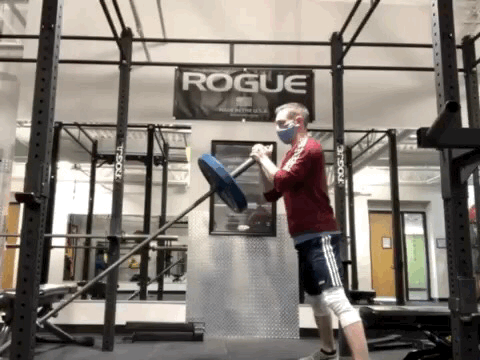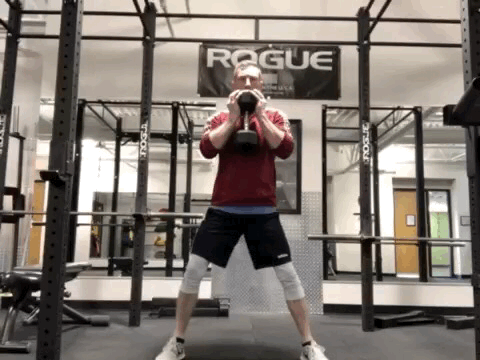Better, Safer Alternatives to the “Big 4” Lifts
More gym gains, fewer nagging injuries!
Contrary to popular long-standing belief, you don’t need to squat, bench, overhead press and deadlift with a barbell to build muscle and get stronger. The idea that the “big 4” is required for a lifting program is precisely why so many gym-goers are always banged up and not making the progress they want.
The fact is, way too many people attempt lifts their bodies aren’t capable of performing with proper biomechanics. If you can’t do a pain-free bodyweight squat, you have no business loading a barbell and forcing yourself into a compromising position.
But there are plenty of options to make gains without causing or exacerbating injuries, which is why all of these alternatives have their place in our Gym Essentials workout programs.
Before we dive in to some pain-free alternatives, let’s talk about why these staple exercises can cause pain for a lot of people:
1. Barbell Bench Press
The bench press can be a problem because it’s an internal rotator of the shoulders. Unfortunately, because so many people are in a constant seated/hunched position for the most of the day, most people already have excessively internally rotated shoulders. Bench pressing only makes it worse.
Couple that with the fact that the barbell doesn’t offer much freedom of movement in the shoulder joint, it’s no wonder so many people complain about shoulder pain after bench pressing.
2. Overhead Barbell Press
It’s actually pretty difficult to perform an overhead press with perfect biomechanics. Why? This lift requires you to press overhead while maintaining a tightened core to protect the spine. If you can’t maintain a tight core, hyperextension in the lower back occurs, putting sheer force on your spine. Not good.
To press overhead without putting yourself at risk of injury, you need adequate shoulder and upper back mobility while maintaining core/glute engagement throughout the lift.
3. Barbell Deadlift
The deadlift is probably the most dangerous lift for your back and lower extremities if you do it without perfect biomechanics. Bending down to pick up a load (like a barbell) in front of the body places a ton of stress on your ankles, hips, and spine to get into the correct position.
I rarely have my patients deadlift with a barbell. There are plenty of safer alternatives that don’t put the spine in a vulnerable position… and you’ll still build strength and muscle.
4. Back Squat
I personally love squat day, but that doesn’t mean everyone should do it with a bar behind their neck. Even without the bar, the squat requires good ankle, hip, and thoracic mobility – the fact is, most people can’t even do a bodyweight squat properly.
Add a barbell and you’re loading weight to a compromised structure. Not good.
Now let’s get into some of the safer alternatives you can use to keep the gains coming and bring your nagging injuries to an end.
Bench Press Alternatives
1. Swiss Bar Floor Press
Any floor press variation you do limits the range of motion your shoulders have to go through, which is beneficial from an injury and pain-prevention standpoint.
You can use a neutral grip with the Swiss bar, which externally rotates the shoulders (as opposed to the internal rotation you’d be using with the straight bar). You also have the ability to load more weight than you potentially could with dumbbells.
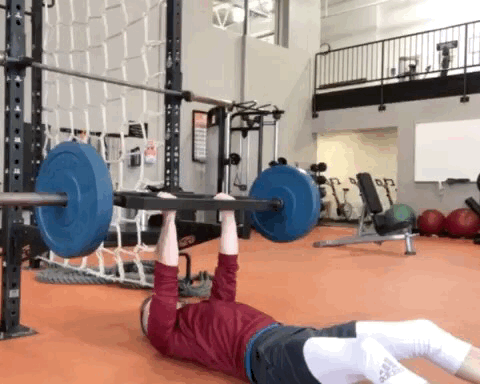
2. Dumbbell Floor Press (with External Rotation)
You’ll use a reduced range of motion in the shoulders and engage your triceps more with this variation. Turning your palms in toward each other externally rotates the shoulders and alleviates pain/tension in the shoulders as you press.
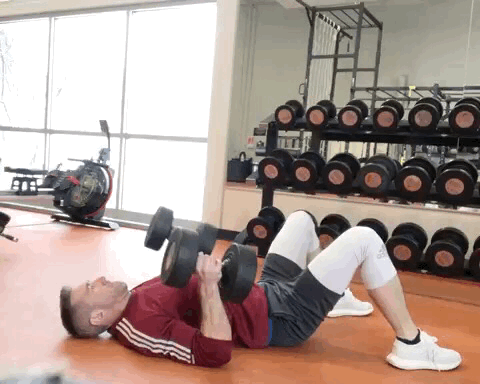
3. Decline Dumbbell Press
Using a decline bench with dumbbells reduces shoulder stress and emphasizes pec engagement during the bench press.
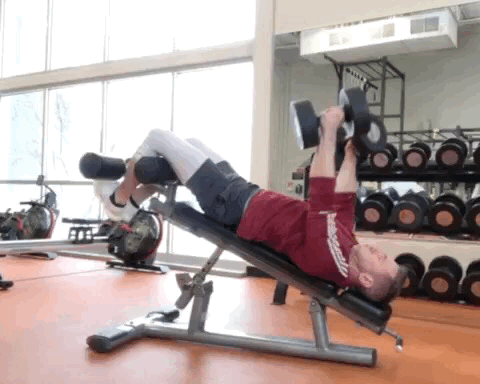
Overhead Press Alternatives
1. Single-Arm Overhead Landmine Press
Pressing directly overhead requires a combo of shoulder and thoracic mobility.
Since most people lack these prerequisites, this single-arm landmine variation is a great alternative. Leaning forward into the press with your torso and arm angle at a similar diagonal line reduces the range of motion your shoulders have to go through in an overhead position. It also minimizes hyperextension in the lower back, taking stress out of the spine.
Deadlift Alternatives
1. Hex Bar Deadlift
The hex bar deadlift is my go-to for developing serious strength and muscle gains for my patients without putting their spines at risk.
Why? Weight distribution. Having the handles at your sides requires less mobility to get into an optimal set up and allows you to use more leg strength instead of just pulling with your back.
Most people aren’t able to get into an optimal position to do a barbell deadlift without putting their back in harm’s way. The hex bar deadlift is a safer alternative that hugely reduces the potential stress on the spine.
Back Squat Alternatives
1. Landmine Box Squat
This is one of my favorite squat variations for a few reasons:
Healthy shoulder positioning: Front-loading weight in a landmine squat is easier on the shoulders than the classic front squat.
Core engagement: Your core is working hard to stabilize the spine with the weight distributed in front of the body.
Loading potential: You can load more weight with landmine squats compared to doing goblet squats with a dumbbell.
2. Goblet Squat
Unlike the back squat, if you lean too far forward on a goblet squat you’ll drop the weight, so you have no choice but to keep your spine and pelvis upright. In addition, because front squats and goblet squats generally require less weight to get the same effect on the body, they put less compressive and shear force on the knees, lowering the risk of meniscus or ligament damage.
The Bottom Line
You aren’t limited to classic squatting, benching, overhead pressing and deadlifting with a barbell to get stronger and build muscle. Work with lifts you can do pain-free and stop forcing your body into risky positions.
And remember, while you can expect to experience some degree of delayed onset muscle soreness when you start any kind of exercise program, pain is never normal. Pain is the body’s way of saying something is wrong.
Whether you’re a pro athlete, weekend warrior or just looking to tone up, study after study shows that regular chiropractic care is an essential part of getting out of pain and reaching your full potential. Ready to get stronger and looking for a chiropractor? To make an appointment at Ascent Chiropractic, call 262-345-4166 or schedule an appointment with our online scheduling app.


